The latest tech weapons in the sun care armoury are poised to hit the big time this summer, and may end up becoming as essential as sunscreen in the fight against sunburn, wrinkles and skin cancer.
SPF 30. Check. Shades. Check. Hat. Check. UV-detecting wristband, skin patch or clip-on? When you think about protecting your skin from harmful UVA and UVB rays, wearable tech probably isn’t the first thing that comes to mind.
Today there is enormous focus on sun care and the hazards of prolonged sun exposure. Us as consumers now not only have the options of selecting from hundreds of lotions but the tech industry has leaped ahead again and has come up with some very “smart” ways to keep us safe.
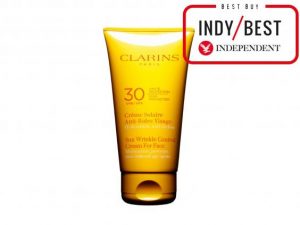
The Independent “Indy/Best Buy” Award -2017
Before launching into the realms of the high-tech, we need to caution you that these don’t replace the use of sunscreens and cover-ups. Our best tip for the low-tech necessity is Clarins Sun Wrinkle Control Cream for Face UVB/UVA 30 which won the Independent Newspapers “Indy/Best” (Best Buy) Award for Summer 2017.
So, cue the latest UV trackers. These wonder wearables detect the sun’s rays and warn you if you need to slap on more sunscreen, cover up or seek shade. Basic colour-changing and LED wristbands such as SmartSun, UV Buddy, and SunFriend and a host of colour changing bracelets have been available for a while, but this summer the newer crop of smart wearables is set to put these relatively low-tech devices in the shade.
Raymio wearable UV sensor
Raymio is a wristband that you wear whenever you’re outside. It monitors your sun activity and sends you alerts, reminders, and tips to keep you protected from the sun
Raymio is a Danish startup founded by a group of students from The University of Copenhagen. The startup has an experienced management and engineering team, and is co-financed by the Danish government. Raymio have also partnered with the Danish Meteorological Institute for UV index satellite data which means that the data is reliable.
The Raymio sensor bracelet has all the trademarks of clean, modern Danish design and the perfect balance of unisex, but the utility of this band is what is most compelling.
What it does:
- It gives you the UV forecast, so you are always prepared (even on cloudy days because UVA rays shine every day).
- It warns you when the UV index has become dangerously high.
- It lights up and flashes red when you need to re-apply sunscreen.
- It tells you when to seek shade or put on a hat.
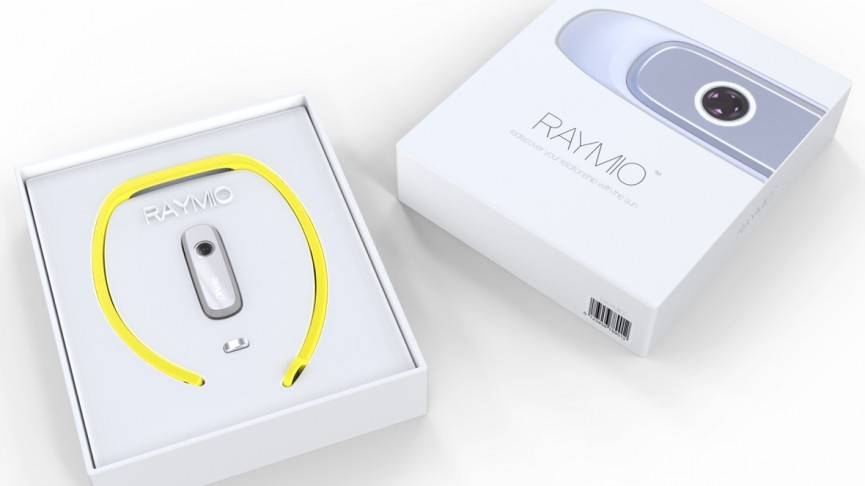
Raymio wearable UV sensor
The wristband is built with directional sensors that keep track of UVA and UVB levels all day, 24/7. These sensors track the amount of UV exposure you are getting exactly where you are. So, it’s much more accurate than looking up a generic UV forecast from a weather website.
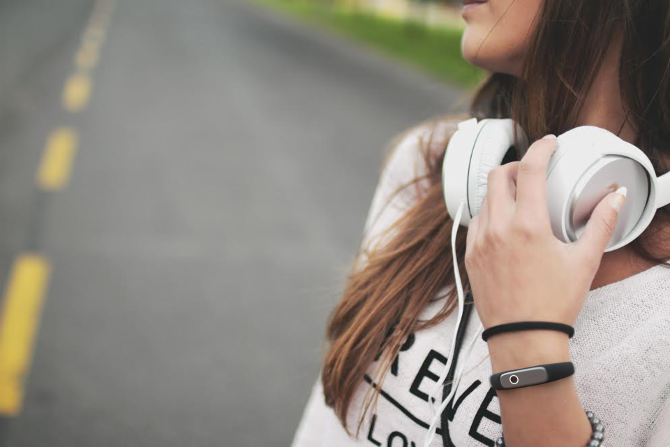
The band connects to an app on your mobile phone (iOS or Android), which keeps track of your sun exposure history and habits. It also provides helpful sun protection tips for your skin type.

Raymio caters to all skin pigmentation variants using the Fitzpatrick Scale – the official standard numerical classification schema for human skin colour – to classify your skin type and predict how it reacts to UV radiation.
What’s nice about a band like this is that you don’t need to keep looking at your phone, unlike low-tech UV apps that are made for mobile phones. When the band flashes red, you know it’s an important alert that requires you to act.
Another great feature of the Raymio is that anyone in your family can wear it as the app will keep track of different users. A wristband can be used by an individual or by a group of people with different skin types. A family can use a wristband each, each keeping track of their own exposure and the exposure of family members by merely adding them as
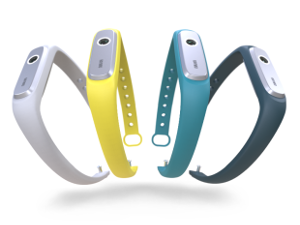
friends. The family could also add themselves as three separate users, using UV data from a single wristband. Each family
member will have a separate profile in the app. The sensor unit can be removed from the wristband and put anywhere. This could be useful for group settings. It also allows you to change wristband.)
The app will also connect you with other family members and friends so that all of you can share information with each other.
Raymio comes in black, white, yellow, and blue.
Raymio is not available in stores yet but is on pre-order now. The company is currently running a funding campaign on Indiegogo, a crowdfunding site. Presently, the funding campaign ends on November 2, 2017, after that you will need to contact them directly to order and they do ship internationally.
Raymio’s website: www.Raymio.com.
Microsoft Band 2
A fitness tracker with UV-detecting technology, the Band 2 may have more reach than the dedicated UV-tracking wearables out now and launching soon.
The Microsoft Band 2 has a built-in sensor which measures UV radiation intensities between 295nm and 325nm, the most damaging wavelengths, and delivers an almost instant reading that is correlated to the real-time UV index.
You simply position the wristband’s sensor in the sun to get an accurate reading, which ranges from low to extreme. “We then go further by providing insights and actions you may take to combat this exposure,” says Microsoft’s Lindsey Matese. The device provides basic sun care advice (e.g. “If you burn easily, cover up and use SPF 30+”), as well as regular UV alerts that warn you if the Band has detected damaging rays.
While its readings are delivered on the wrist for convenience, Microsoft’s wearable does have its limitations as a UV tracking device. You must expose the sensor to the sun to get a reading and the notifications the Band provides are pretty generic and not based on your exact skin type.
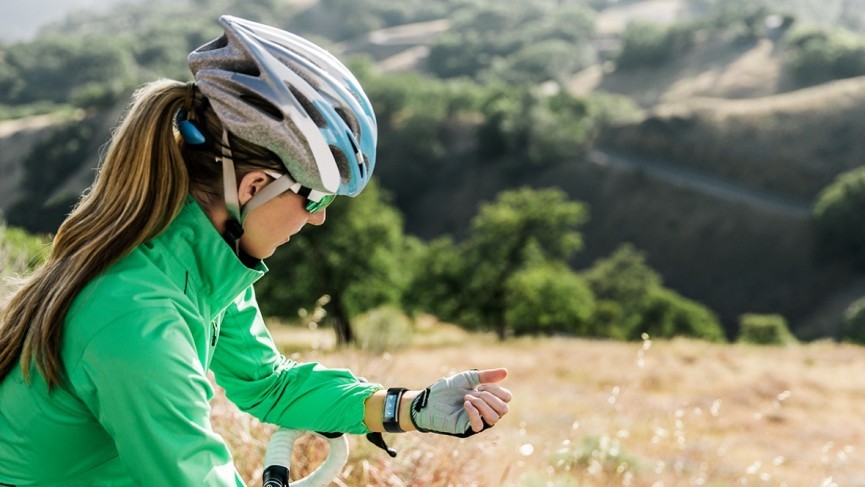
Microsoft Band 2
You simply position the wristband’s sensor in the sun to get an accurate reading, which ranges from low to extreme. “We then go further by providing insights and actions you may take to combat this exposure,” says Microsoft’s Lindsey Matese. The device provides basic sun care advice (e.g. “If you burn easily, cover up and use SPF 30+”), as well as regular UV alerts that warn you if the Band has detected damaging rays.
While its readings are delivered on the wrist for convenience, Microsoft’s wearable does have its limitations as a UV tracking device. You must expose the sensor to the sun to get a reading and the notifications the Band provides are generic and not based on your exact skin type.
The barely-there patch: L’Oréal’s UV Patch
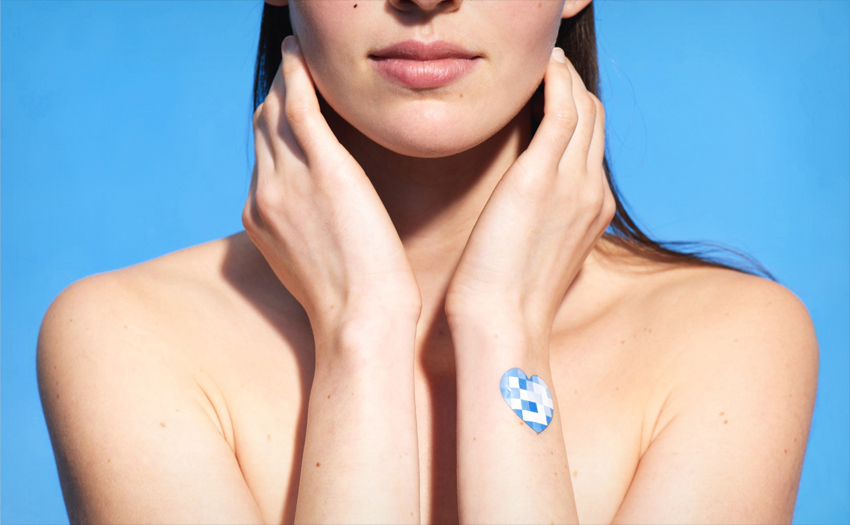
L’Oréal’s UV Patch
The most unobtrusive wearable in our round-up, L’Oréal’s second skin patch is a stretchy disposable device the size of a small plaster that features 16 tiny squares which change colour when exposed to UV light. Launching this summer, the patch will be distributed for free.
The patch is an ultra-thin adhesive containing photosensitive dyes which is linked to a smart algorithm factoring in the user’s personal data (photo-type, skin type, eye and hair colour), location and weather data. The app then generates essential information regarding the amount of daily sun exposure and sun safe behaviour tips. My UV Patch is the first wearable of its kind: it can be worn for up to three days even while swimming, showering and playing sports… and takes into account the application of sunscreen.
To get a reading, you take a quick snap of the patch with your smartphone camera and the accompanying My UV Patch app analyses the varying photosensitive dye squares to determine the amount of UV exposure the wearer has received, warning you if you’ve had too much, based on your skin tone. The La Roche-Posay My UV Patch mobile app is available on both iOS and Android, incorporating Near Field Communications (NFC)-enabled technology into the patch-scanning process for Android.
“We truly believe that we have created a breakthrough tech here,” says Guive Balooch, the head of L’Oréal’s Technology Incubator Research and Innovation division, a team of 25 scientists who developed the patch, amongst other products. “Other trackers on the market are mainly rigid electronics that are worn on the wrist. This does not allow you to apply the wearable on the part of the body you are most concerned about.”
WINNER of the EUROPEAN “NUDGING FOR GOOD” DIAMOND AWARD 2016
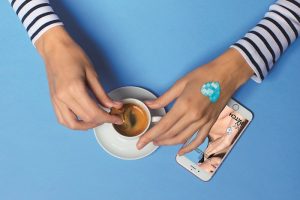 My UV Patch is expected to be made available to consumers later this year but is already Available while stocks last, from the month of October 2017, free with the purchase of any La Roche-Posay Anthelios product through Dermastore or Skinmiles and selected DisChem pharmacies.
My UV Patch is expected to be made available to consumers later this year but is already Available while stocks last, from the month of October 2017, free with the purchase of any La Roche-Posay Anthelios product through Dermastore or Skinmiles and selected DisChem pharmacies.
http://www.laroche-posay.co.za/
MiLi Skinmate


This little gadget is not just for skin – it also helps you test the UV effectiveness of all sun protection products and gear. The MiLi Skinmate is a portable, digital UV tracker for both iPhone and Android smart phones.
By inputting your skin type, age and sunscreen via a smart mobile app, the Skinmate gives you reminders to re-apply your sunscreen at the beach or on the golf course through a skin-exposure reader that uses NASA inspired heat-sensor technology.
The MiLi Skinmate is a nifty little gadget that you clip onto your bag or belt and is linked via Bluetooth to your smartphone. It can in fact link to any device that has Bluetooth 4.0. It is a mere 48 x 66 x 6mm in size and is compatible with iOS7+ and Android 4.3+. It comes standard with a 1-year warranty and a battery life of 2 years.
The only down-side to this little gizmo is that the battery cannot be replaced.
The MiLi Skinmate is not available directly yet in South Africa but they do ship internationally:
SunSprite Wearable Light Tracker
The SunSprite Light Tracker eliminates both downsides of the first two gadgets, SunSprite is completely solar-powered (no cords or cabls!) and clips anywhere using a flexible magnetic attachment. The SunSprite mobile app provides easy-to-understand, real-time feedback based on your personal tracking data.
Invented by Harvard doctors, the SunSprite tracks both your bright light and UV exposure. Bright lights on the device show daily bright light exposure at the push of a button.
![]()
The SunSprite Light Tracker eliminates both downsides of the first two gadgets, SunSprite is completely solar-powered (no cords or cabls!) and clips anywhere using a flexible magnetic attachment. The SunSprite mobile app provides easy-to-understand, real-time feedback based on your personal tracking data.
Invented by Harvard doctors, the SunSprite tracks both your bright light and UV exposure. Bright lights on the device show daily bright light exposure at the push of a button.
![]() The app also provides useful insights into the flip-side of UV exposure – that of not getting enough bright light: for 30 years, research has proven that bright light improves your energy, mood, and sleep. Further research found that bright light may also help a wide range of conditions including insomnia, ADHD, and dementia.
The app also provides useful insights into the flip-side of UV exposure – that of not getting enough bright light: for 30 years, research has proven that bright light improves your energy, mood, and sleep. Further research found that bright light may also help a wide range of conditions including insomnia, ADHD, and dementia.
SunSprite syncs to its free app (iOS & Android) using Bluetooth Smart technology. The app allows you to set goals, view trends and earn badges while providing personalised coaching.
The Sunsprite is available via Amazon and is shipped to South Africa
The SunFriend Personal UV Monitor
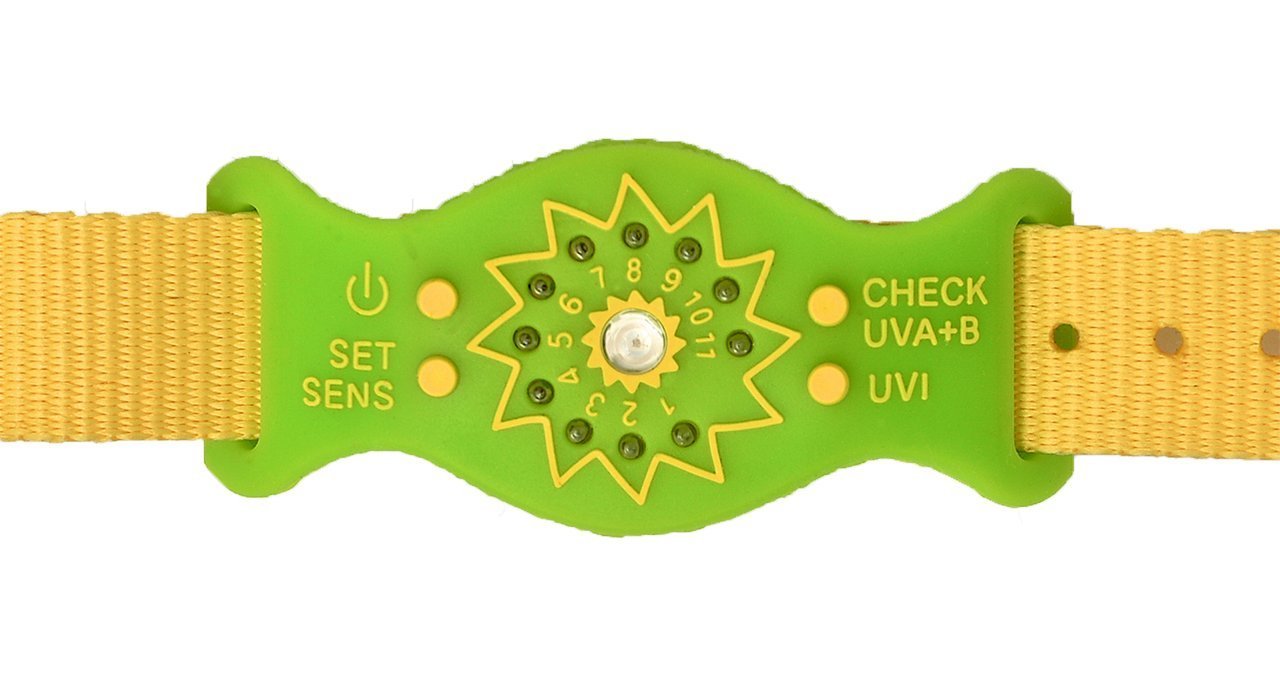
The SunFriend Personal UV Monitor
Like the SunSprite, the research is aimed at allowing you to not only block the UVA radiation but also monitor the amount of beneficial UVB that your body needs to make vitamin D. In European countries, this is at almost pandemic levels.
The SunFriend monitors both UVA and UVB and does not rely on your smartphone to interpret the results. The SunFriend is a battery-powered bracelet that allows you to set your personal skin colour and sensitivity. It reads your UV exposure throughout the day-from sun and reflected surfaces, both indoors and out. A Gallium Nitride photodiode sensor in the middle of the device looks like a tiny lens, and is what reads the UV rays to determine the UV index and watch your exposure to UVA and B rays.
When all the LEDs light up and start flashing, you’ve had your safe amount of UV for the day. If you see any skin reddening after all the LED’s have lit up, you know to set your SunFriend at a lower number the following day. SunFriend is waterproof to 3 meters, so it’s beach friendly and is available in 5 different colours.
Unfortunately, the battery on the SunFriend is also not replaceable but the relatively inexpensive price means that this is not overly much of an issue to replace the entire unit. You would get about 1 year’s use out of it.
SunFriend is also available on Amazon


